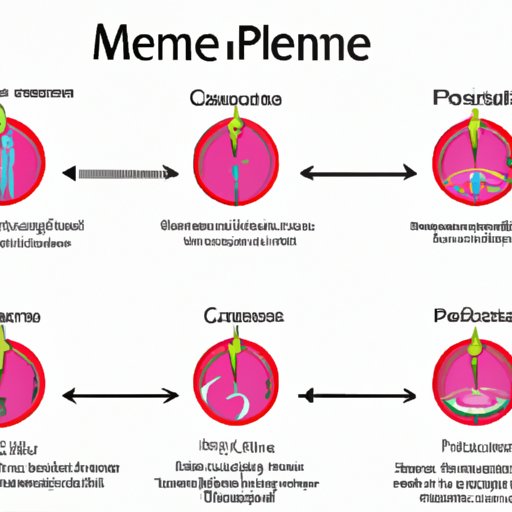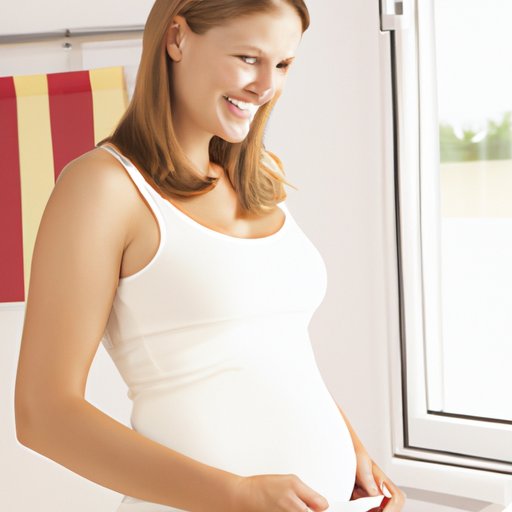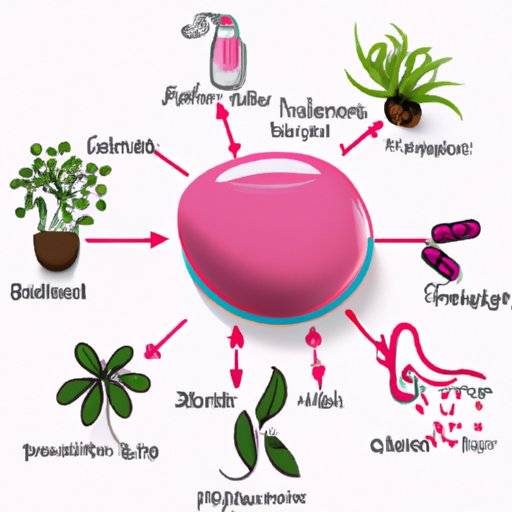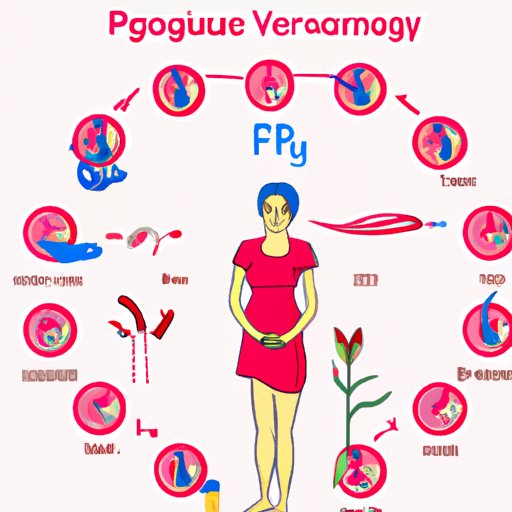Introduction
Understanding when you are most fertile is an important step for couples trying to conceive. Knowing when you are ovulating can help you maximize your chances of getting pregnant by having sex during your most fertile days. This article will explore when you are fertile after a period and how you can track your ovulation to determine the best time to try to conceive.

Overview of the Menstrual Cycle
The menstrual cycle is a complex process that takes place in the female body each month. It is regulated by hormones and involves changes in the uterus, cervix, and ovaries. The menstrual cycle typically lasts 28 days, although this can vary from person to person. During the menstrual cycle, the body prepares for pregnancy by releasing an egg (ovulation), which is then available to be fertilized. If fertilization does not occur, the lining of the uterus is shed, resulting in a period.
How to Track Ovulation and Maximize Fertility After a Period
Tracking your ovulation is key to maximizing your chances of conceiving. There are several methods you can use to track your ovulation, including tracking your basal body temperature, using an ovulation predictor kit, or monitoring changes in cervical mucus. By tracking these signs, you can pinpoint when you are most fertile and increase your chances of conceiving.

What to Expect During Your Fertile Window After a Period
Understanding the Timing of Fertility After a Period
The timing of fertility after a period depends on the length of your menstrual cycle. Generally speaking, ovulation occurs 14 days before the start of your next period. For example, if your cycle is 28 days long, ovulation would typically occur on day 14. However, if your cycle is shorter or longer than 28 days, ovulation will occur earlier or later in your cycle.
According to a study published in the journal Human Reproduction, women have the highest chance of conceiving in the three days leading up to and including ovulation. This window of time is known as the “fertile window” and is the best time to have sex if you are trying to get pregnant.
What Are the Signs of Ovulation After a Period?
There are several signs that can indicate when you are ovulating, such as changes in your cervical mucus, a shift in your basal body temperature, or ovulation predictor kits. Tracking these signs can help you determine when you are most fertile and increase your chances of conceiving.

Exploring Natural Ways to Enhance Fertility After a Period
Diet and Exercise
Eating a healthy diet and exercising regularly can help improve your fertility. Eating a balanced diet rich in fruits and vegetables and limiting processed foods can help ensure that your body is getting the nutrients it needs. Additionally, exercising regularly can help reduce stress levels and regulate your menstrual cycle, both of which can help improve your fertility.
Herbal Supplements
Certain herbal supplements can also help improve fertility. According to a study published in the journal Phytotherapy Research, some herbs, such as chasteberry, ashwagandha, and maca, may help regulate hormones and improve fertility. However, it is important to speak to your doctor before taking any herbal supplements to ensure they are safe for you to take.
Tips to Boost Your Chances of Getting Pregnant After a Period
Have Sex Regularly
Having sex regularly during your fertile window can increase your chances of getting pregnant. According to a study published in the journal Fertility and Sterility, having sex every two to three days during your fertile window is the best way to maximize your chances of conceiving. This will ensure that there is a fresh supply of sperm available for fertilization when the egg is released.
Track Your Basal Body Temperature
Tracking your basal body temperature (BBT) can help you determine when you are ovulating. The BBT is the lowest temperature your body reaches while at rest. During ovulation, the BBT increases slightly, so tracking it can help you identify when you are most fertile.
Use an Ovulation Predictor Kit
Ovulation predictor kits (OPKs) are another helpful tool for tracking ovulation. OPKs measure the levels of luteinizing hormone (LH) in your urine, which increases just before ovulation. By tracking LH levels, you can accurately identify when you are most fertile.
Conclusion
Summary of Key Points
Understanding when you are most fertile after a period is an important step for couples trying to conceive. Ovulation typically occurs 14 days before the start of your next period, but this can vary depending on the length of your menstrual cycle. Tracking your ovulation is key to maximizing your chances of conceiving, and there are several methods you can use, such as tracking your basal body temperature, using an ovulation predictor kit, or monitoring changes in cervical mucus. Additionally, you can improve your fertility by eating a healthy diet, exercising regularly, and taking certain herbal supplements. Having sex regularly during your fertile window and using an ovulation predictor kit can also help boost your chances of getting pregnant.
Resources for Further Information
For more information about fertility and conception, visit the following websites:
- American Pregnancy Association: https://americanpregnancy.org/getting-pregnant/
- NHS: https://www.nhs.uk/conditions/pregnancy-and-baby/trying-for-a-baby/
- Mayo Clinic: https://www.mayoclinic.
(Note: Is this article not meeting your expectations? Do you have knowledge or insights to share? Unlock new opportunities and expand your reach by joining our authors team. Click Registration to join us and share your expertise with our readers.)
